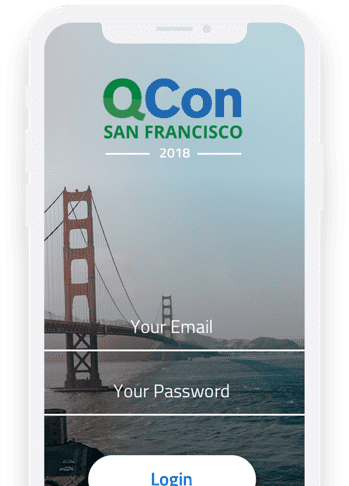Presentation: Artwork Personalization @Netflix
Share this on:
What You’ll Learn
-
Understand how Netflix leverages machine learning to make recommendations and choose personalized artwork for those recommendations.
-
Learn how a continuous feedback loop is used to get data, process it, and update recommendations.
-
Hear how Netflix architected and designed their artwork personalization solution.
Abstract
For many years, the main goal of the Netflix personalized recommendation system has been to get the right titles in front each of our members at the right time. With a catalog spanning thousands of titles and a diverse member base spanning over a hundred million accounts, recommending the titles that are just right for each member is crucial. But the job of recommendation does not end there. Why should you care about any particular title we recommend? What can we say about a new and unfamiliar title that will pique your interest? How do we convince you that a title is worth watching? Answering these questions is critical in helping our members discover great content, especially for unfamiliar titles. One way to do this is to consider the artwork or imagery we use to visually portray each title. If the artwork representing a title captures something compelling to you, then it acts as a gateway into that title and gives you some visual “evidence” for why the title might be good for you. Selecting good artwork is important because it may be the first time a member becomes aware of a title (and sometimes the only time), so it must speak to them in a meaningful way. In this talk, we will present an approach for personalizing the artwork we show for each title on the Netflix homepage. We will look at how to frame this as a machine learning problem using contextual multi-armed bandits in a recommendation system setting. We will also describe the algorithmic and system challenges involved in getting this type of approach for artwork personalization to succeed at Netflix scale. Finally, we will discuss some of the future opportunities that we see to expand and improve upon this approach.
What work do you do at Netflix?
I lead one of the Machine Learning and Recommendation teams at Netflix. We're responsible for the end-to-end machine learning that decides what shows up on the Netflix homepage across all our different experiences. When you log into Netflix, my team is responsible for what rows of TV shows and movies you see on the homepage. We select rows and titles to help our members quickly find something great to watch. For example, whether you see Popular on Netflix or Continue Watching at the top of your homepage. We also work on algorithms to personalize the imagery that we display for each title across the experience.
One-third of all Internet traffic at prime-time in North America flows through Netflix systems. How do you measure scale and volume for the amount of recommendations you’re making?
There are over 130 million Netflix subscribers and each home page has many different recommendations on it. Over 80% of what people watch comes from our recommendation systems. Each time you log in, you're typically seeing something new. So we’re serving up a huge number of recommendations to people on a regular basis.
Your talk is Artwork Personalization at Netflix. What’s the purpose, the motivation, and the scope of your talk?
Our personalization don't end with selecting what title we want to show to the member. Each section of the screen is a precious piece of real estate so we want to ensure the member understands why this particular title is being shown to them, especially for a new original series or movies that we create. A great new title may only have one chance to really resonate with somebody, so we want to give it the best opportunity to make the connection with them.
To do this, we select the imagery based on the person’s viewing habits. For example, if we take a romantic comedy, maybe you've watched a lot of comedies so we show you a funny image from that movie. If another person watches more romances we may use an image of a couple from the movie on a date. It’s about helping a member understand what's in it for them by presenting the most appropriate imagery we have. This helps them find and enjoy that film.
Who is your target audience?
The target audience for the talk is people who have some background or are interested in machine learning. They should know some basic machine learning but would like to learn more about how to use bandits and contextual bandits. Bandits add new technical challenges by having to close a feedback loop. It's not just a classification or regression problem. You're actually putting something out there and then needing to pull the data back. Once it comes back, you then update your models and put them out again. It’s a continuous loop of improvement. So it’s an interesting application of machine learning that should be of useful to people facing similar challenges.
What technology problem keeps you up at night?
Making sure that when we're recommending titles we're actually showing the ones people want to watch and will enjoy. We know that when we show titles on the homepage, people are likely to click on them and watch them because they're ranked highly. But we want to make sure that our recommendations showcase the best way for people to spend their time on Netflix. We don’t want our recommendations to be influenced by feedback loops just due to us ranking them highly in the past because it may mean we don’t end up surfacing the content that people will enjoy the most.
Similar Talks




Tracks
Monday, 5 November
-
Microservices / Serverless Patterns & Practices
Evolving, observing, persisting, and building modern microservices
-
Practices of DevOps & Lean Thinking
Practical approaches using DevOps & Lean Thinking
-
JavaScript & Web Tech
Beyond JavaScript in the Browser. Exploring WebAssembly, Electron, & Modern Frameworks
-
Modern CS in the Real World
Thoughts pushing software forward, including consensus, CRDT's, formal methods, & probabilistic programming
-
Modern Operating Systems
Applied, practical, & real-world deep-dive into industry adoption of OS, containers and virtualization, including Linux on Windows, LinuxKit, and Unikernels
-
Optimizing You: Human Skills for Individuals
Better teams start with a better self. Learn practical skills for IC
Tuesday, 6 November
-
Architectures You've Always Wondered About
Next-gen architectures from the most admired companies in software, such as Netflix, Google, Facebook, Twitter, & more
-
21st Century Languages
Lessons learned from languages like Rust, Go-lang, Swift, Kotlin, and more.
-
Emerging Trends in Data Engineering
Showcasing DataEng tech and highlighting the strengths of each in real-world applications.
-
Bare Knuckle Performance
Killing latency and getting the most out of your hardware
-
Socially Conscious Software
Building socially responsible software that protects users privacy & safety
-
Delivering on the Promise of Containers
Runtime containers, libraries, and services that power microservices
Wednesday, 7 November
-
Applied AI & Machine Learning
Applied machine learning lessons for SWEs, including tech around TensorFlow, TPUs, Keras, PyTorch, & more
-
Production Readiness: Building Resilient Systems
More than just building software, building deployable production ready software
-
Developer Experience: Level up your Engineering Effectiveness
Improving the end to end developer experience - design, dev, test, deploy, operate/understand.
-
Security: Lessons Attacking & Defending
Security from the defender's AND the attacker's point of view
-
Future of Human Computer Interaction
IoT, voice, mobile: Interfaces pushing the boundary of what we consider to be the interface
-
Enterprise Languages
Workhorse languages found in modern enterprises. Expect Java, .NET, & Node in this track







